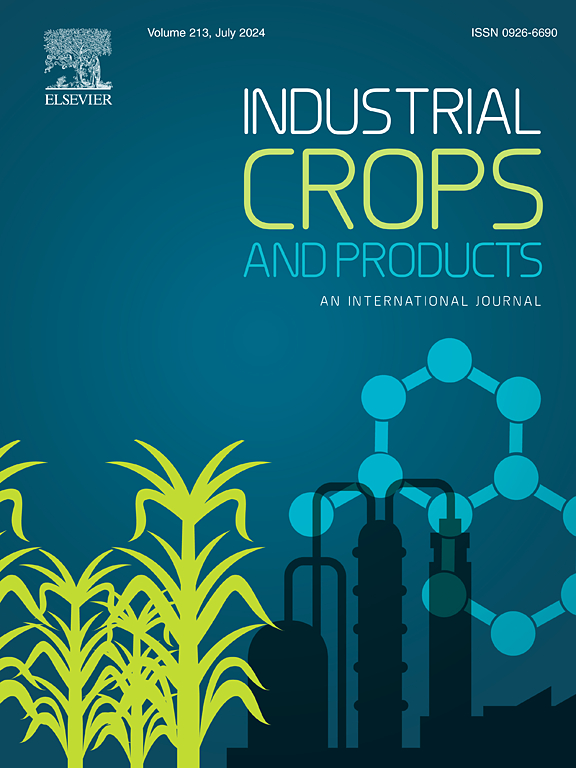IF 5.6
1区 农林科学
Q1 AGRICULTURAL ENGINEERING
引用次数: 0
摘要
染色体片段置换系(CSSLs)是用于数量性状位点(QTL)绘图、基因克隆和育种的强大遗传资源。在此,我们开发了两组由 245 和 128 个独特品系组成的 CSSLs,它们分别来自 OX2028 × K326 和 Samsun × K326 杂交。在这两组基因中,平均每个CSSL携带1.8和2.9个导入片段,平均物理片段长度分别约为34.3 Mb和27.6 Mb。这些CSSL分别覆盖了OX2028和Samsun基因组的97%和77%。通过对表型性状进行基于最佳线性无偏预测(BLUP)的 QTL 图谱绘制,我们共鉴定出与 6 个农艺性状和 3 个抗病性状相关的 64 个 QTL。这些 QTLs 对表型变异的解释率从 1.5 % 到 50.8 % 不等。其中,在 OX2028 衍生群体中检测到 22 个 QTLs,在 Samsun 衍生 CSSLs 中检测到 42 个 QTLs。值得注意的是,烟草叶宽的新 QTL qLW1-1 被缩小到 1 号染色体上的 8-Mb 区间,编码一种辅助因子响应因子蛋白的 NtZY01G00114 被认为是候选基因。我们的研究为烟草育种提供了宝贵的遗传资源,并加深了我们对烟草复杂性状遗传基础的理解。本文章由计算机程序翻译,如有差异,请以英文原文为准。
Development of two sets of tobacco chromosome segment substitution lines and QTL mapping for agronomic and disease resistance traits
Chromosome segment substitution lines (CSSLs) represent a powerful genetic resource for quantitative trait loci (QTL) mapping, gene cloning and breeding. Here, we developed two sets of CSSLs consisting of 245 and 128 unique lines, which derived from OX2028 × K326 and Samsun × K326 crosses. On average, each CSSL carried 1.8 and 2.9 introgressed segments in the two sets, with an average physical segment length of approximately 34.3 Mb and 27.6 Mb, respectively. These CSSLs covered ∼97 % and ∼77 % of the genomes of OX2028 and Samsun, respectively. By performing QTL mapping based on best linear unbiased prediction (BLUP) of phenotypic traits, we identified a total of 64 QTLs associated with six agronomic traits and three disease resistance traits. These QTLs explained phenotypic variation ranging from 1.5 % to 50.8 %. Among them, 22 QTLs detected in OX2028 derived population and 42 detected in Samsun derived CSSLs. Notably, a new QTL for tobacco leaf width, qLW1–1 was narrowed down to an 8-Mb interval on chromosome 1, and NtZY01G00114, encoding an auxin-response factor protein, was considered as the candidate gene. Our study provides valuable genetic resources for tobacco breeding and enhances our understanding of the genetic basis of complex traits in tobacco.
求助全文
通过发布文献求助,成功后即可免费获取论文全文。
去求助
来源期刊

Industrial Crops and Products
农林科学-农业工程
CiteScore
9.50
自引率
8.50%
发文量
1518
审稿时长
43 days
期刊介绍:
Industrial Crops and Products is an International Journal publishing academic and industrial research on industrial (defined as non-food/non-feed) crops and products. Papers concern both crop-oriented and bio-based materials from crops-oriented research, and should be of interest to an international audience, hypothesis driven, and where comparisons are made statistics performed.
 求助内容:
求助内容: 应助结果提醒方式:
应助结果提醒方式:


